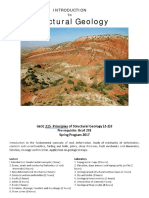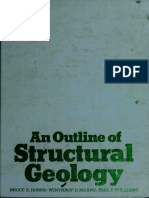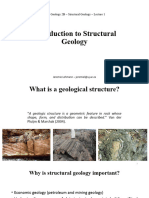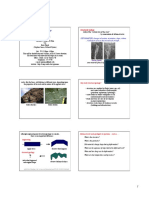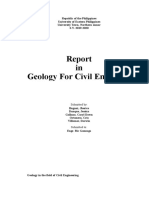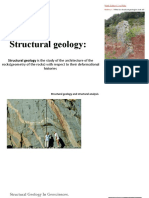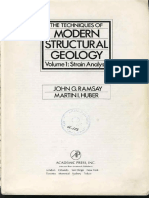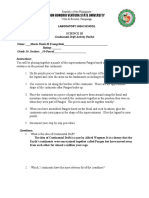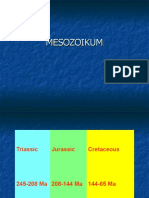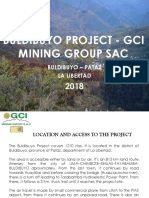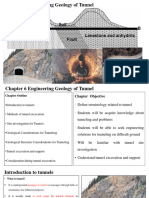0% found this document useful (0 votes)
29 views5 pagesBasic Concept
1. The document discusses the dynamic nature of the Earth through geological processes like earthquakes and volcanic activity that have continuously shaped the planet throughout its history.
2. Structural geology studies the deformed rocks of the Earth's crust and attempts to reconstruct the forces that caused the changes and evolution of the planet over time.
3. Observation of rock structures at different scales is important for structural geology and can provide information about past regional deformation and tectonic processes.
Uploaded by
fathurCopyright
© © All Rights Reserved
We take content rights seriously. If you suspect this is your content, claim it here.
Available Formats
Download as PDF, TXT or read online on Scribd
0% found this document useful (0 votes)
29 views5 pagesBasic Concept
1. The document discusses the dynamic nature of the Earth through geological processes like earthquakes and volcanic activity that have continuously shaped the planet throughout its history.
2. Structural geology studies the deformed rocks of the Earth's crust and attempts to reconstruct the forces that caused the changes and evolution of the planet over time.
3. Observation of rock structures at different scales is important for structural geology and can provide information about past regional deformation and tectonic processes.
Uploaded by
fathurCopyright
© © All Rights Reserved
We take content rights seriously. If you suspect this is your content, claim it here.
Available Formats
Download as PDF, TXT or read online on Scribd
/ 5



